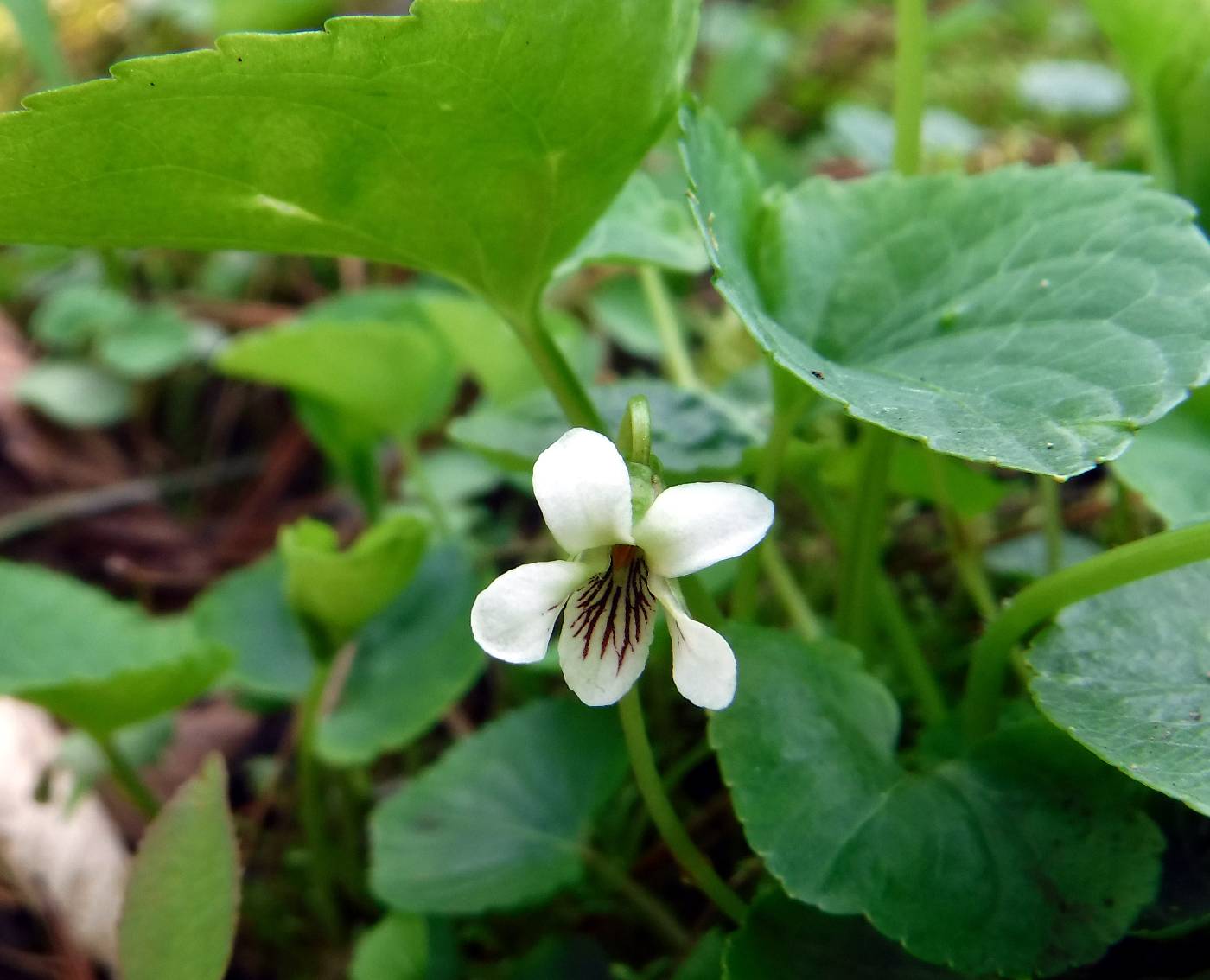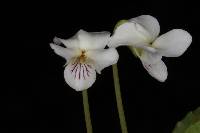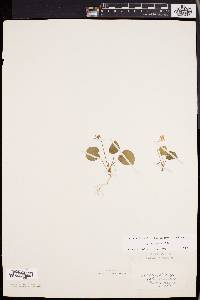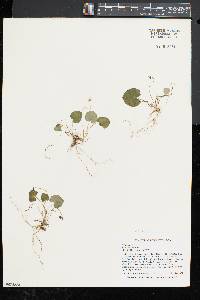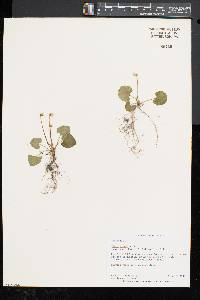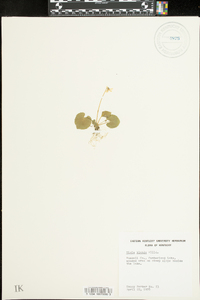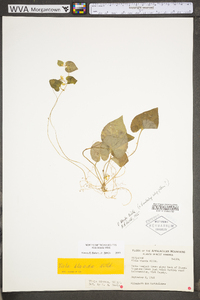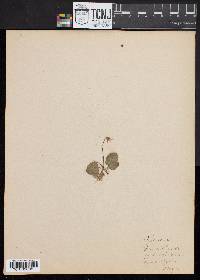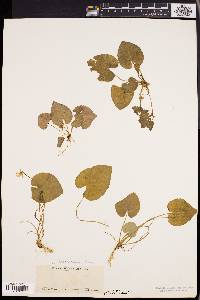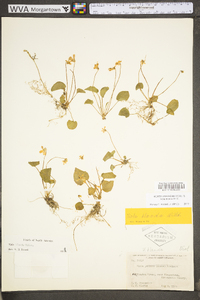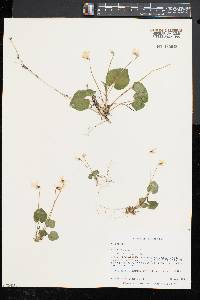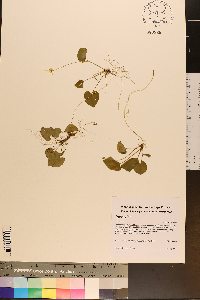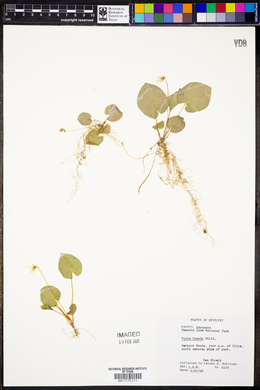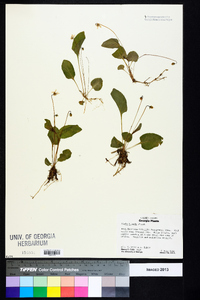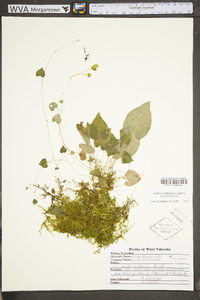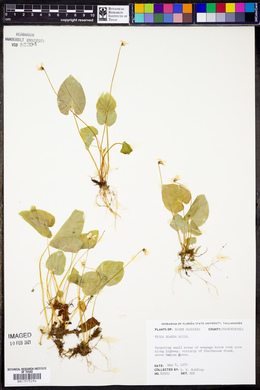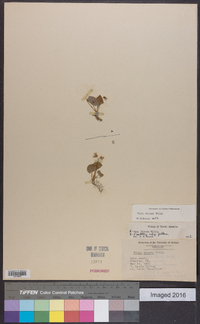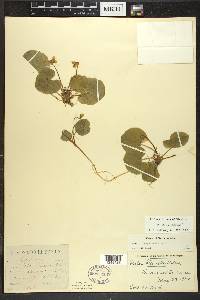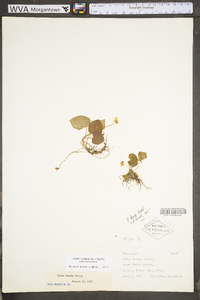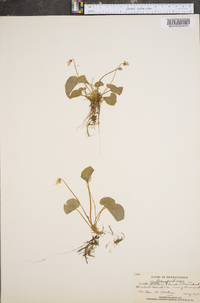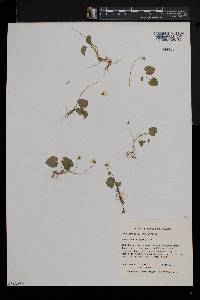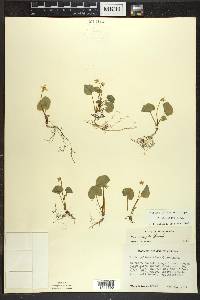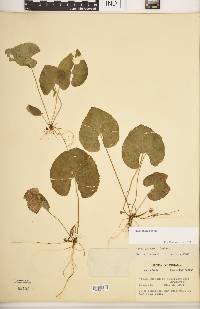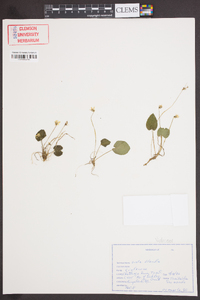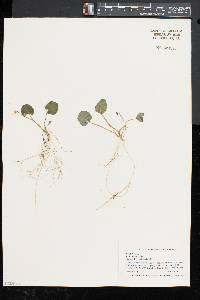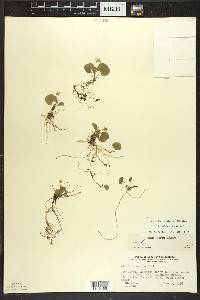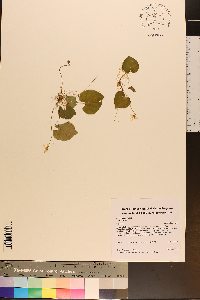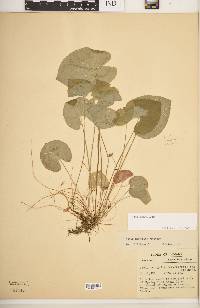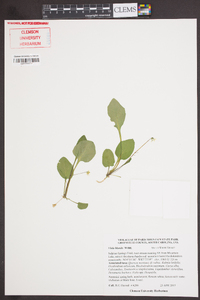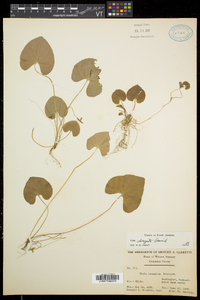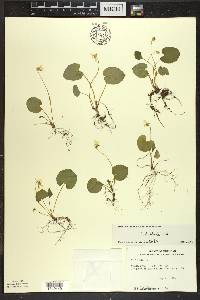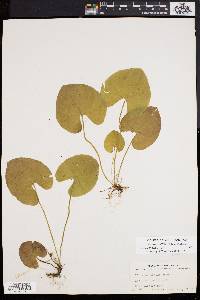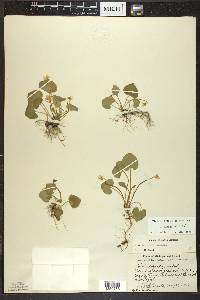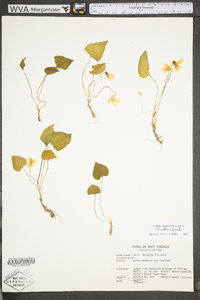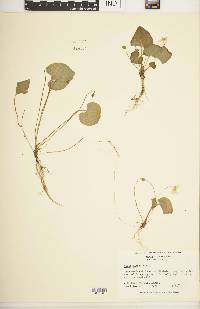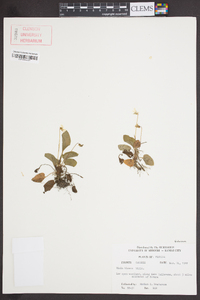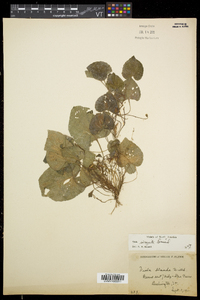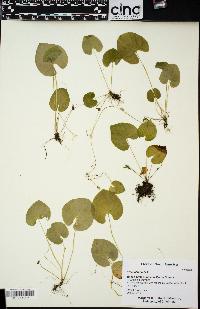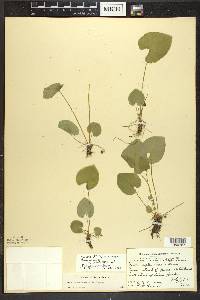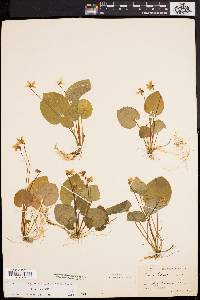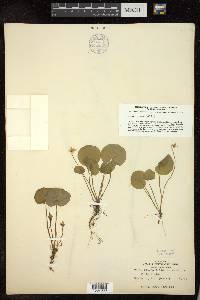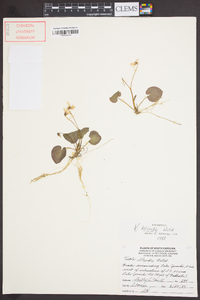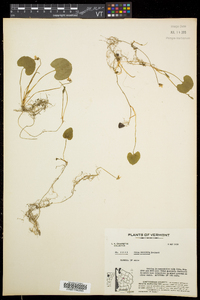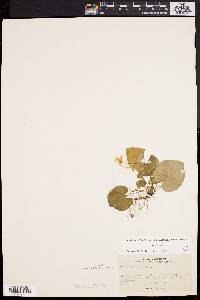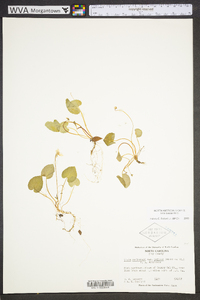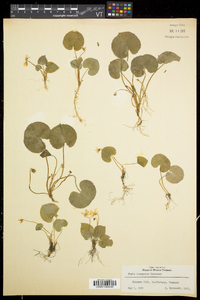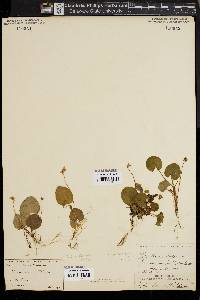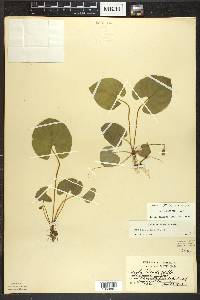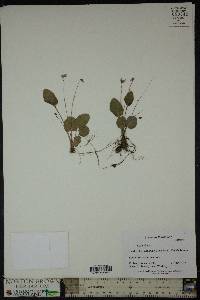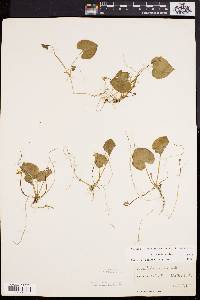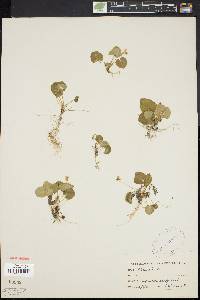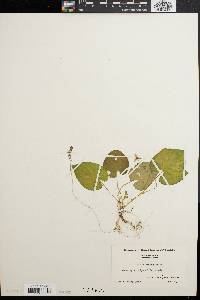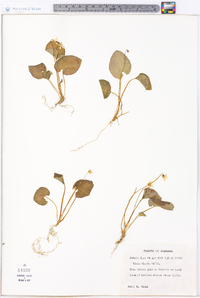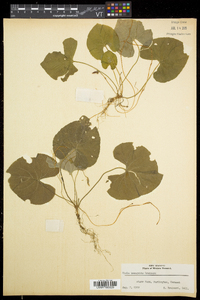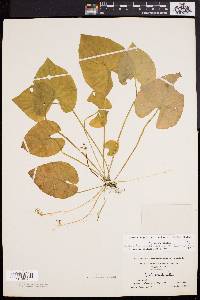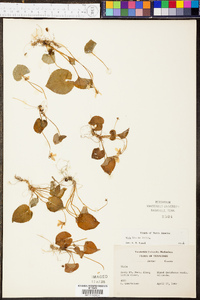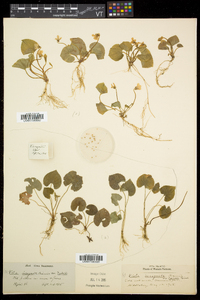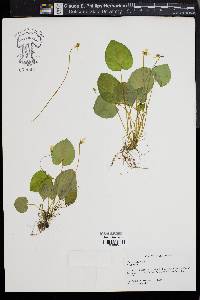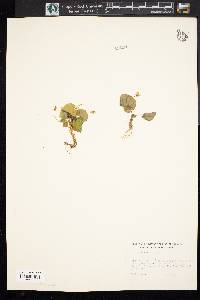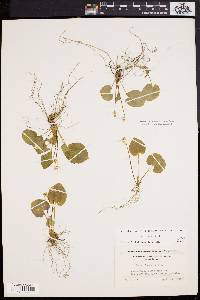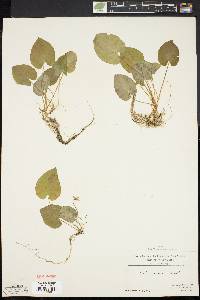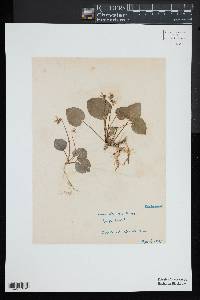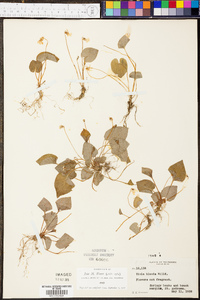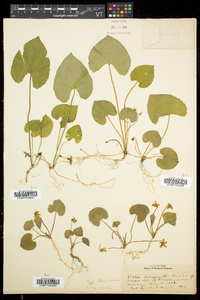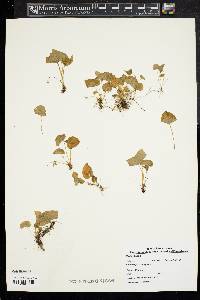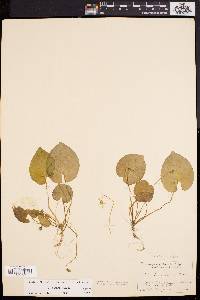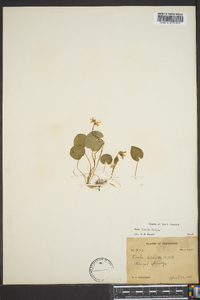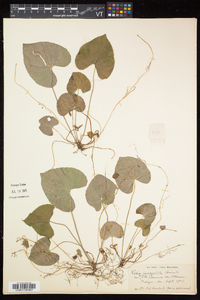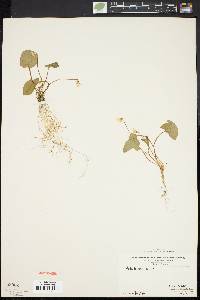
|
|
|
|
Family: Violaceae
Sweet White Violet
[Viola alsophila Greene] |
Perennial herb 10 - 15 cm tall Stem: absent aboveground, leaves and flowers arising independently and directly from a rootstock of slender (under 3 mm diameter), horizontal rhizomes and spreading by obvious, slender, pale runners (stolons). Leaves: basal, long-stalked, finely sharp-toothed, sparsely to densely white stiff-hairy (hairs under 1 mm long), dark green above, distinctly paler below, 3 - 6 cm long, 2 - 4 cm wide, broadly heart-shaped or egg-shaped with indented base and pointed tip. Sometimes the smaller leaves are more kidney-shaped with a very short, pointed tip, but overall the leaves are typically longer than wide with the length of the midrib over three-quarters the width of the blade. Stipules usually more than 7 mm long, green, in contrast to often reddish tinted stalks, Flowers: stalked, white, 1 - 1.5 cm long, bilaterally symmetric with two upper petals, two lateral petals, and lower petal with base modified into a rounded nectar spur. In the summer, producing prostrate stalks terminated by very fertile flowers that do not open (cleistogamous). Flower stalks often reddish, like leaf stalks. Sepals: five, green, lance-shaped with ear-like appendages (auricles) at the base. Petals: five, separate, all differently shaped, lacking beards, but the lower three with brown-purple veins near base. The upper two petals are narrowly oblong and reflexed or twisted, the two lateral petals point more forward, and lowest petal is prolonged at its base into a short, rounded spur or sac. Stamens: five, separate, but very tightly arranged so anthers touch as they surround ovary. The filaments are very short, and the lower two stamens have spur-like nectaries on their backs that extend into the spur or sac of the lower petal. Pistil: with a single-chambered, superior ovary; and a single style that expands into a short, scoop-shaped stigma. Fruit: a many-seeded, green with purple flecks (or more purplish than green), hairless, 4 - 6 mm long, egg-shaped capsule on long, arching or prostrate stalks. The capsule opens lengthwise from its top to disperse the dark brown seeds which have a large amount of oily endosperm, and often an appendage (aril). Similar species: Viola blanda is similar to V. macloskeyi ssp. pallens, but that taxon has obscurely toothed and hairless leaf blades with the lower surface often orangish when dry, and the capsules are pure green atop erect stalks. This species is also very similar to a more northern species, V. renifolia, but that species does not have runners or stolons, the rhizomes are more vertical, the larger leaves are kidney-shaped with blunt or rounded tips, the midribs measure less than three-quarters the blade width, and the lower leaf surface is hairless when the upper leaf surface is densely hairy with 1 - 2 mm long hairs, but when the upper leaf surface is shiny and hairless, the lower surface may be hairy. Flowering: April to early June Habitat and ecology: Uncommon or even rare, primarily restricted to wet woods or swampy areas, especially behind dunes in the eastern part of the Chicago Region. Occurence in the Chicago region: native Notes: The populations of Viola blanda in the Midwestern United States may be segregated as the variety V. blanda var. palustriformis (also previously included under V. icognita), where as the typical variety would be restricted to the populations of the Appalachian region. However, there is great overlap between the two varieties and it is especially difficult to clearly separate material based only on morphologic characters. The typical variety of Appalachia is said to be more consistently hairless. Viola blanda does hybridize with V. macloskeyi ssp. pallens and the hybrid has very few hairs on the leaves and the leaf edges are round-toothed. Etymology: Viola is the classical name for the genus. Blanda means "pleasant" or "mild". Author: The Field Museum Acaulescent, with slender creeping rhizomes and later in the season with well developed leafy or naked stolons, glabrous to commonly with some short, stiff, white hairs on the upper surface of the basal lobes of the lvs; petioles and peduncles usually red-tinged; lvs broadly cordate-ovate to cordate-orbicular, dark green with a satiny sheen, acute or acutish, the basal sinus narrow (or the lobes overlapping), avg larger than in no. 14 [Viola macloskeyi F. E. Lloyd], the largest ones 2-4+ cm wide at anthesis; fls often fragrant, on peduncles shorter than or surpassing the lvs; pet white, the 3 lower with brown-purple veins near the base, all beardless or nearly so, the 2 upper usually linear-oblong and reflexed-twisted, the 2 lateral pointing forward, so that the fl does not look flat-faced; cleistogamous fls on prostrate peduncles, with purplish, ovoid frs 4-6 mm; seeds dark brown, acute at base; 2n=44. Cool ravines and moist, shady slopes in deep humus, usually under evergreens; s. Me. to N.J., O., and s. Ind., and in the mts. to N.C., Tenn., and n. Ga. Apr., May. (V. incognita) Gleason, Henry A. & Cronquist, Arthur J. 1991. Manual of vascular plants of northeastern United States and adjacent Canada. lxxv + 910 pp. ©The New York Botanical Garden. All rights reserved. Used by permission. From Flora of Indiana (1940) by Charles C. Deam In slightly acid soil in sweet gum, red maple, and beech woodland; more rarely in dry ground with beech and oaks. Nieuwland found it growing in moss in a tamarack bog in St. Joseph County. This species has been reported frequently from Indiana but no doubt many of the reports should be referred to other species. In my exchanges and in the herbaria I have examined I find many specimens labeled this species that should be referred to Viola incognita and its variety. [Deam says of V. incognita var. forbesii, a form lumped with V. blanda in modern treatments,:] generally in mucky soil on the shady borders of lakes and in bogs and marshes. Very local but in colonies. …… Indiana Coefficient of Conservatism: C = 8 Wetland Indicator Status: FACW |

